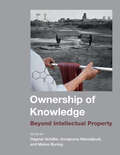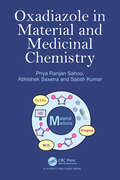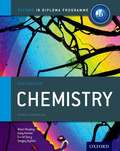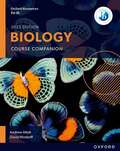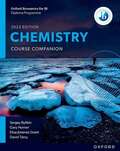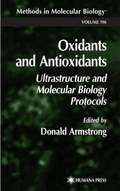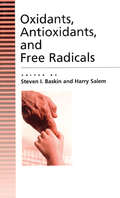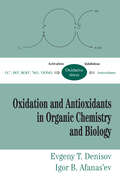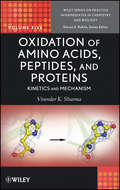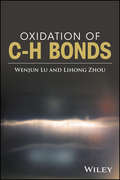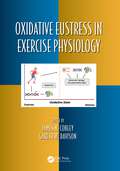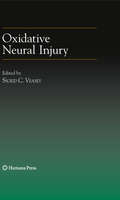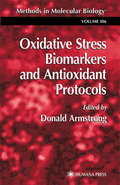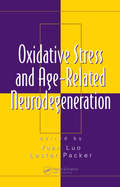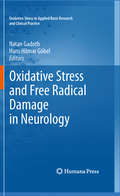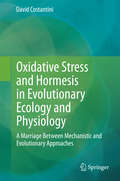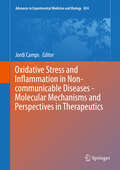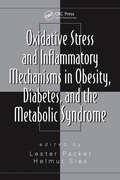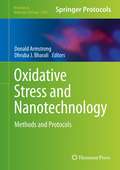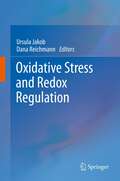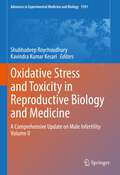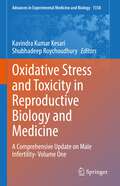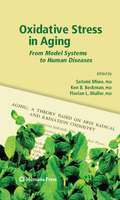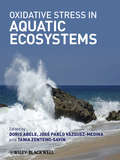- Table View
- List View
Ownership of Knowledge: Beyond Intellectual Property
by Dagmar Schäfer, Annapurna Mamidipudi, and Marius BuningA framework for knowledge ownership that challenges the mechanisms of inequality in modern society.Scholars of science, technology, medicine, and law have all tended to emphasize knowledge as the sum of human understanding, and its ownership as possession by law. Breaking with traditional discourse on knowledge property as something that concerns mainly words and intellectual history, or science and law, Dagmar Schäfer, Annapurna Mamidipudi, and Marius Buning propose technology as a central heuristic for studying the many implications of knowledge ownership. Toward this end, they focus on the notions of knowledge and ownership in courtrooms, workshops, policy, and research practices, while also shedding light on scholarship itself as a powerful tool for making explicit the politics inherent in knowledge practices and social order. The book presents case studies showing how diverse knowledge economies are created and how inequalities arise from them. Unlike scholars who have fragmented this discourse across the disciplines of anthropology, sociology, and history, the editors highlight recent developments in the emerging field of the global history of knowledge—as science, as economy, and as culture. The case studies reveal how notions of knowing and owning emerge because they reciprocally produce and determine each other&’s limits and possibilities; that is, how we know inevitably affects how we can own what we know; and how we own always impacts how and what we are able to know.ContributorsDagmar Schäfer, Annapurna Mamidipudi, Cynthia Brokaw, Marius Buning, Viren Murthy, Marjolijn Bol, Amy E. Slaton, James Leach, Myles W. Jackson, Lissant Bolton, Vivek S. Oak, Jörn Oeder
Oxadiazole in Material and Medicinal Chemistry
by Satish Kumar Priya Ranjan Sahoo Abhishek SaxenaThe book “Oxadiazole in Material and Medicinal Chemistry” is based on the utility of organic motifs that contain oxadiazole units in their molecular architecture. Most of the common and alternate ways to synthesize oxadiazole-based probes have been discussed. The book also features some of the advanced applications of such organic motifs in liquid crystals, OLEDs, imaging agents, and medicines. Few practical applications of oxadiazole-based molecules in material and electronic areas have also been outlined. The book focuses on understanding the role of oxadiazole scaffolds in biological events, disease monitoring, and detection. The therapeutic effect of oxadiazole-based probes on cancer, inflammation, and neurodegeneration have also been covered in the book. Oxadiazole probes in inhibitor design and the corresponding inhibitory potency as drug development have been outlined. The authors hope that the book will garner positive interest among students and researchers associated with material and medicinal chemistry.
Oxford IB Diploma Programme: Chemistry Course Companion
by Brian Murphy Sergey Bylikin Gary Horner David TarcyThis book is a companion for students of Chemistry in the International Baccalaureate Diploma Programme.
Oxford Resources For Ib Dp Biology Course Book
by Andrew Allott David MindorffFeaturing a wealth of engaging content, this concept-based Course Book has been developed in cooperation with the IB to provide the most comprehensive support for the DP Biology specification, for first teaching from September 2023. Created by experienced IB authors, examiners and teachers, it is packed with activities, questions, and opportunities to regularly practice, plus extensive assessment preparation support. Use this print Course Book alongside the digital course on Oxford's Kerboodle platform for the best teaching and learning experience. Oxford's DP Science offer brings together the IB curriculum and future-facing functionality, enabling success in DP and beyond.
Oxford Resources for IB DP Biology Course Book
by Andrew Allott David MindorffDeveloped in cooperation with the IB and created by experienced IB authors, examiners and teachers, this Course Book is fully aligned to the 2023 subject guide for DP Biology, providing comprehensive and engaging coverage of all topics.
Oxford Resources for IB, DP Chemistry Course Book: Course Companion (International Baccalaureate Series)
by Sergey Bylikin Gary Horner David Tarcy Elisa Jimenez GrantFeaturing a wealth of engaging content, this concept-based Course Book has been developed in cooperation with the IB to provide the most comprehensive support for the DP Chemistry specification, for first teaching from September 2023. It is packed full of questions, clear explanations and worked examples, plus extensive assessment preparation support.
Oxidants and Antioxidants
by Donald ArmstrongIn Oxidants and Antioxidants: Ultrastructural and Molecular Biology Protocols, a panel of world authorities present cutting-edge molecular and ultrastructure techniques for investigating the pathophysiology of oxidative stress. Described in step-by-step detail, these readily reproducible methods use the latest in immunodetection, X-ray diffraction, confocal microscopy, in situ hybridization, chemiluminescence, and cytofluorescence. Additional techniques take advantage of electron paramagnetic resonance, advanced glycation endproducts, Western blotting analysis, transcription factors, p47 phox translocation, and microsphere delivery systems. Two companion volumes, Oxidative Stress Biomarkers and Antioxidant Protocols (2002), and Free Radical and Antioxidant Protocols (1998), focus on the related biochemical and cellular biological methods.
Oxidants, Antioxidants And Free Radicals
by Steven I. Baskin and Harry SalemThis volume collates articles investigating antioxidant, oxidant and free radical research. It examines the role of such research in health and disease, particulary with respect to developing greater understanding about the many interactions between oxidants and antioxidants, and how such substances may act as natural protectants and /or natural toxicants.
Oxidation and Antioxidants in Organic Chemistry and Biology
by Igor B. Afanas'ev Evgeny T. DenisovProviding a comprehensive review of reactions of oxidation for different classes of organic compounds and polymers, and biological processes mediated by free radicals, Oxidation and Antioxidants in Organic Chemistry and Biology puts the data and bibliographical information you need into one easy-to-use resource. You will find up-to-date information
Oxidation of Amino Acids, Peptides, and Proteins
by Virender K. Sharma Steven E. RokitaExplains the role of reactive intermediates in biological systems as well as in environmental remediationWith its clear and systematic approach, this book examined the broad range of reactive intermediate that can be generated in biological environments, detailing the fundamental properties of each reactive intermediate. Readers gain a contemporary understanding of how these intermediates react with different compounds, with an emphasis on amino acids, peptides, and proteins. The author not only sets forth the basic chemistry and nature of reactive intermediates, he also demonstrates how the properties of the intermediates presented in the book compare with each other.Oxidation of Amino Acids, Peptides, and Proteins begins with a discussion of radical and non-radical reactive species as well as an exploration of the significance of reactive species in the atmosphere, disinfection processes, and environmental remediation. Next, the book covers such topics as:Thermodynamics of amino acids and reactive species and the effect of metal-ligand binding in oxidation chemistryKinetics and mechanisms of reactive halogen, oxygen, nitrogen, carbon, sulfur and phosphate species as well as reactive high-valent Cr, Mn, and Fe speciesReactivity of the species with molecules of biological and environmental importanceGeneration of reactive species in the laboratory for kinetics studiesOxidation of amino acids, peptides, and proteins by permanganate, ferryl, and ferrate speciesApplication of reactive species in purifying water and treating wastewaterWith this book as their guide, readers will be able to assess the overall effects of reactive intermediates in biological environments. Moreover, they'll learn how to apply this knowledge for successful water purification and wastewater treatment.
Oxidation of C-H Bonds
by Lihong Zhou Wenjun LuA combination of oxidation methods and C‒H bond functionalization, this book emphasizes mechanistic understanding and critical analysis of synthetic reactions to offer a guide or manual for practicing chemists.• Combines oxidation methods and C‒H bond functionalization, two of the most important aspects of organic synthesis• Deals with C‒H bonds, an area of dynamic and continuous research across chemistry and catalysis• Helps readers understand the fundamental and applied differences among various oxidation methods and reactions• Covers mechanistic details, conditions, oxidation reagents, and practical aspects of different reactions
Oxidative Eustress in Exercise Physiology (Oxidative Stress and Disease #47)
by James N. CobleyOxidative Eustress in Exercise Physiology unravels key physiological responses and adaptations to different redox-regulated exercise paradigms at the cell, tissue, and whole-body level in model systems and humans in health and disease. While the mechanistic details are still unclear, key intracellular redox indices seem to be dysregulated with age. Consequently, beneficial molecular responses to acute endurance exercise decline in older individuals. Recent research suggests that manipulating mitochondrial redox homeostasis by supplementing with the mitochondria-targeted coenzyme Q10 for six weeks markedly improves physical function in older adults; i.e. it may be possible to maximise the benefits of exercise by manipulating the redox environment. The research described in this book suggests that significant translational potential exists with respect to cardiovascular disease, neurodegeneration and cancer. An international team of researchers documents the importance of redox biology in health and disease, especially when exercise is a clinically useful tool for the treatment of many diseases and conditions. Features Defines essential redox biology reactions and concepts in exercise physiology Assesses key redox parameters in an in vivo human exercise context Identifies the challenges, opportunities and boundaries of current knowledge Includes a critique of the underlying mechanisms Summarises examples of translationally important research relating to disease states Related Titles Draper, N. & H. Marshall. Exercise Physiology for Health and Sports Performance (ISBN 978-0-2737-7872-1) Wackerhage, H., ed. Molecular Exercise Physiology: An Introduction (ISBN 978-0-4156-0788-9)
Oxidative Neural Injury
by Sigrid C. VeaseyThis book examines the current evidence and research supporting the importance of oxidative injury in selected animal models of both neurodegenerative diseases and neural injury. Each chapter discusses oxidative injury in a selected model, analyzing the major cellular mechanisms that underpin the progression of neural injury. In addition to the analysis of these models, each chapter's purpose is to not only relate, but to also contrast the specific injury across models as a way of identifying the common and unique pathways of oxidative neural injury. Through this, each author presents possible fertile future directions for translational research for the identification of possible therapeutics.
Oxidative Stress Biomarkers and Antioxidant Protocols
by Donald ArmstrongDonald Armstrong updates and expands his highly praised Free Radical and Antioxidant Protocols (Humana, 1998) with a collection of new and valuable methods for evaluating the pertubations in cell function resulting from increased oxidative stress. Presented in a user-friendly, step-by-step format, these readily reproducible techniques cover both free radical-derived and antioxidant biomarkers. The methodologies demonstrated include ELISA, HPLC, infrared spectroscopy, gas chromatography-mass spectroscopy, immunoblotting, electroelution fractionation, isoelectric focusing, voltametry, and electron paramagnetic resonance imaging. Special emphasis is given to the separation of complex mixtures of plant antioxidants, soft drug design to protect from toxic oxidative metabolites, in vitro oxidation conditions, and correcting for random measurement error to improve statistical interpretation. A soon-to-be-published companion volume, Oxidants and Antioxidants: Ultrastructural and Molecular Biology Protocols (0-89603-851-3), contains state-of-the-art molecular and ultrastructural methods that expand the total number of protocols to 109 assays.
Oxidative Stress and Age-Related Neurodegeneration (Oxidative Stress and Disease)
by Yuan Luo Lester PackerOxidative Stress and Age-Related Neurodegeneration brings together researchers from a variety of fields to compare normal aging and disease-related neurodegeneration in terms of susceptibility to and effects of oxidative stress. They address how these effects can be attenuated, and examine whether antioxidants and natural micronutrients, such as those found in Gingko biloba, green tea, blueberries, and grape seed extract, can play a role. The book includes various ways research is getting to the core of neurodegenerative disease, including the use of proteomics, comparisons to related diseases, and examinations at the cellular and molecular levels.
Oxidative Stress and Free Radical Damage in Neurology
by Natan Gadoth Hans Hilmar GöbelThe role of free radicals and oxidative stress in neurological disorders has only recently been recognized, leaving clinical neurologists to seek in vain for information on the subject even in major textbooks. What published information there is may consist of brief reminders of the possible association of superoxidase dismutase with familial amyotrophic lateral sclerosis and nitrous oxide with migraine. With luck they may also find information on the purported role of free radicals in the pathogenesis of traumatic brain injury. Oxidative Stress and Free Radical Damage in Neurology sets the record straight, focusing on clinical and research issues regarding the interplay of free radicals and the human nervous system. Crucially, the chapters cover numerous antioxidants and their possible therapeutic role in neurological disorders. Key illnesses such as epilepsy, multiple sclerosis and Parkinson's are analyzed, and chapters also examine more general issues such as the link between free radicals and inflammation of the central nervous system. Clinicians and laboratory researchers alike will find that this book augments their understanding not only of the widespread involvement of free radicals in the central nervous system but also of some uncertainties surrounding whether free radical damage in neurology plays a primary or secondary role.
Oxidative Stress and Hormesis in Evolutionary Ecology and Physiology
by David CostantiniThis book discusses oxidative stress and hormesis from the perspective of an evolutionary ecologist or physiologist. In the first of ten chapters, general historical information, definitions, and background of research on oxidative stress physiology, hormesis, and life history are provided. Chapters 2-10 highlight the different solutions that organisms have evolved to cope with the oxidative threats posed by their environments and lifestyles. The author illustrates how oxidative stress and hormesis have shaped diversity in organism life-histories, behavioral profiles, morphological phenotypes, and aging mechanisms. The book offers fascinating insights into how organisms work and how they evolve to sustain their physiological functions under a vast array of environmental conditions.
Oxidative Stress and Inflammation in Non-communicable Diseases - Molecular Mechanisms and Perspectives in Therapeutics
by Jordi CampsOxidative stress and inflammation underpin most diseases; their mechanisms are inextricably linked. For example, chronic inflammation is associated with oxidation, anti-inflammatory cascades are linked to decreased oxidation, increased oxidative stress triggers inflammation and redox balance inhibits the inflammatory cellular response. Whether or not oxidative stress and inflammation represent the causes or the consequences of cellular pathology, they contribute significantly to the pathogenesis of non-communicable diseases. The incidence of obesity and other related metabolic disturbances are rising, as are age-related diseases due to progressively aging populations. Interrelations between the mechanisms of oxidative stress and of inflammatory signaling and metabolism are, in the broad sense of energy transformation, being increasingly recognized as part of the problem in non-communicable diseases. The book Oxidative Stress and Inflammation in Non-communicable Diseases: Molecular Mechanisms and Perspectives in Therapeutics is an update on the latest research on the molecular basis of non-communicable diseases and the search for possible therapeutic alternatives. The authors of this monograph are experts in their field and the book as a whole, provides an overview of the biochemical alterations underlying diseases such as cardiovascular disease, cancer, obesity, renal disease, neurological diseases and diabetes, emphasizing those aspects that they share in common. We hope that this book will be useful for researchers in biomedicine and also for physicians interested in finding the root causes of the disease, as well as for post-graduate students in biochemistry, molecular biology, nutrition or medicine.
Oxidative Stress and Inflammatory Mechanisms in Obesity, Diabetes, and the Metabolic Syndrome
by Helmut Sies Lester PackerCharacterized by obesity, insulin resistance, dyslipidemia, and hypertension, metabolic syndrome is associated with the risks of type 2 diabetes mellitus and cardiovascular disease. Obesity, which increases the incidence of atherosclerotic cardiovascular disease and subsequently leads to increased stress and inflammation, appears to play a central
Oxidative Stress and Nanotechnology
by Donald Armstrong Dhruba J BharaliThe emergence of nanotechnology has had a profound effect on almost every aspect of the 21st century's daily life. It has had a revolutionary impact from stain-resistant clothing and cosmetics to environmental issues , including energy and medicine and even aerospace engineering. In Oxidative Stress and Nanotechnology: Methods and Protocols, expert researchers in the field detail various aspects of nanotechnology from the oxidative stress point of view. Focusing on synthesis of different antioxidant nanoparticles and antioxidant-loaded nanoparticles, as well as their in vitro/ in vivo mechanisms of action along with their clinical relevance. Written in the highly successful Methods in Molecular BiologyTM series format, chapters include introductions to their respective topics, lists of the necessary materials and reagents, step-by-step, readily reproducible laboratory protocols, and key tips on troubleshooting and avoiding known pitfalls. Authoritative and practical, Oxidative Stress and Nanotechnology: Methods and Protocols seeks to aid scientists in the further study of techniques for nanotechnology in pathophysiology and protection from the oxidative stress point of view.
Oxidative Stress and Redox Regulation
by Ursula Jakob Dana ReichmannMany physiological conditions such as host defense or aging and pathological conditions such as neurodegenerative diseases, and diabetes are associated with the accumulation of high levels of reactive oxygen species and reactive nitrogen species. This generates a condition called oxidative stress. Low levels of reactive oxygen species, however, which are continuously produced during aerobic metabolism, function as important signaling molecules, setting the metabolic pace of cells and regulating processes ranging from gene expression to apoptosis. For this book we would like to recruit the experts in the field of redox chemistry, bioinformatics and proteomics, redox signaling and oxidative stress biology to discuss how organisms achieve the appropriate redox balance, the mechanisms that lead to oxidative stress conditions and the physiological consequences that contribute to aging and disease.
Oxidative Stress and Toxicity in Reproductive Biology and Medicine: A Comprehensive Update on Male Infertility Volume II (Advances in Experimental Medicine and Biology #1391)
by Kavindra Kumar Kesari Shubhadeep RoychoudhuryVolume Two advances the exploration of the fundamental principles of oxidative stress and toxicity on male (and female) reproduction. It includes the advances in research on male reproductive health, the impact of environmental factors, the protective measures using bioactive compounds and traditional medicines, and how to limit toxic exposure. It includes coverage of: Oxidative stress and male infertilityEnvironmental stressors and sexual healthHeavy metals, pesticides, fine particle toxicity and male reproductionProtective measures against oxidative stress in gametes/embryos by using bioactive compounds/phytomedicines in Assisted Reproductive Technology (ART)Role of reactive oxygen species on female reproductionRadiation and mutagenic factors affecting the male reproductive systemBoth volumes provide a comprehensive look at the most basic concepts and advanced research being conducted by world famous scientists and researchers in male infertility and reproduction.
Oxidative Stress and Toxicity in Reproductive Biology and Medicine: A Comprehensive Update on Male Infertility- Volume One (Advances in Experimental Medicine and Biology #1358)
by Kavindra Kumar Kesari Shubhadeep RoychoudhuryThis book discusses the role of oxidative stress in human reproduction with a focus on men’s health. The physiological roles of reactive oxygen species (ROS) in male fertility are the focus in this book. This topic is important because oxidative stress is a result of the imbalance between ROS and antioxidants in the body which may lead to sperm damage (DNA or count), deformity, and eventually, male infertility. Therefore, for a better understanding of the molecular mechanisms related to male genotoxicity and its regulation in infertility, this book provides an up-to-date view on the impact of oxidative stress factors in male reproduction . The main aim of this book is to collect a series of research articles and reviews from a diverse group of scientists to share their research work on the role of ROS or oxidative stress in physiological and pathological states in relation to (in)fertility in the male. This book presents various state-of-the-art chapters of the recent progress in the field of cellular toxicology and clinical manifestations of various issues related to men’s health and fertility. Topics include cell signaling, DNA damage and infertility, the pathophysiology of disease instigation and distribution, immune toxicity and prevention.
Oxidative Stress in Aging
by Florian Muller Kenneth Bruce Beckman Satomi MiwaHuman aging is a complex phenomenon. This state-of-the-art book discusses the role of free radicals in aging in different animal models, as well as the relevance of free radicals on age-related diseases and pathological conditions in humans (following an introduction section of the basics and theory of free radicals). In addition, the major interventions trials of antioxidant supplements in age-related disease, cancer and so forth are reviewed and discussed.
Oxidative Stress in Aquatic Ecosystems
by Tania Zenteno-Savin Doris Abele Jose Pablo Vazquez-MedinaReactive oxygen species (ROS) are increasingly appreciated as down-stream effectors of cellular damage and dysfunction under natural and anthropogenic stress scenarios in aquatic systems. This comprehensive volume describes oxidative stress phenomena in different climatic zones and groups of organisms, taking into account specific habitat conditions and how they affect susceptibility to ROS damage.A comprehensive and detailed methods section is included which supplies complete protocols for analyzing ROS production, oxidative damage, and antioxidant systems. Methods are also evaluated with respect to applicability and constraints for different types of research.The authors are all internationally recognized experts in particular fields of oxidative stress research.This comprehensive reference volume is essential for students, researchers, and technicians in the field of ROS research, and also contains information useful for veterinarians, environmental health professionals, and decision makers.
